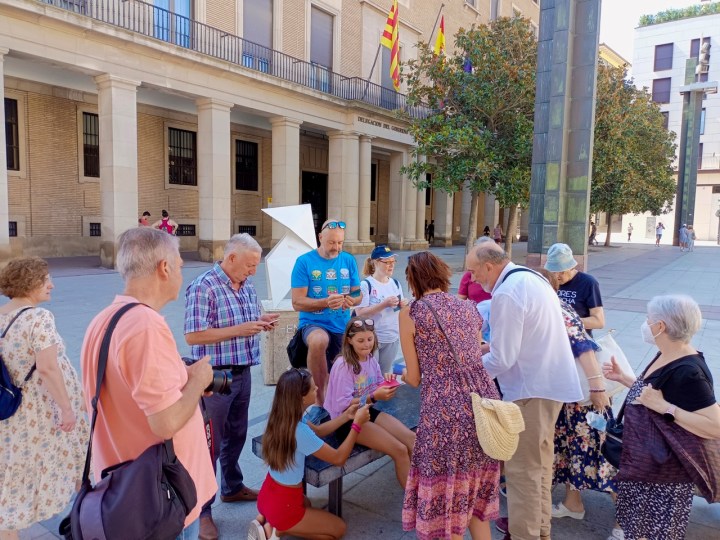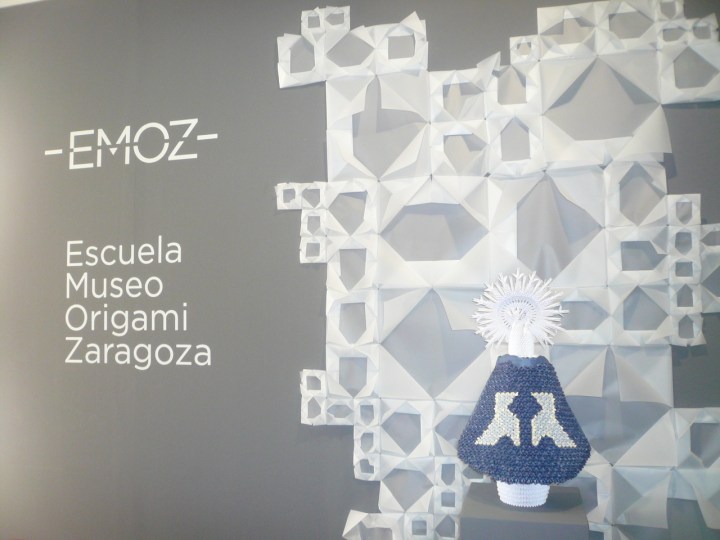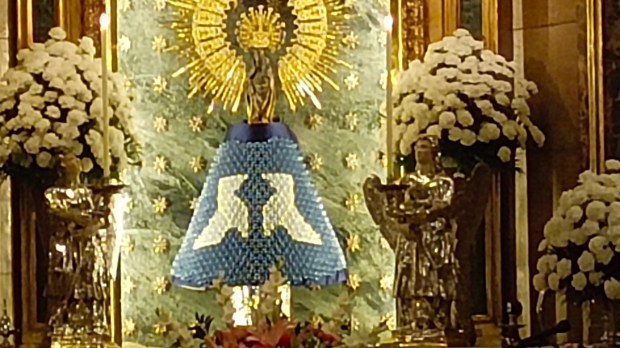Each year since 2007, on August 6—the anniversary of the bombing of Hiroshima—the statue of Our Lady of the Pillar at her shrine in Zaragoza, Spain, is adorned with a mantle made of origami (folded paper).
It’s the convergence of one of the most ancient Marian devotions with an art usually associated with Japan.
An expression of devotion to Our Lady
Our Lady of the Pillar has been the focus of intense Marian devotion in Spain and beyond for many centuries. That devotion finds many forms of expression; among them is the offering of mantles that cover either the statue itself or, more recently, the lower part of the statue and upper part of the pillar. The pillar is a special part of the devotion, because according to tradition, the jasper stone is the very one on which Our Lady stood and it has never been moved from the place where she appeared.
According to Spanish news outlet Heraldo, the shrine’s sacristy holds more than 450 mantles in its cabinets, given by individuals, institutions, businesses, and even royalty. Most are made of cloth, although there is also one of leather and one made using crochet.
It’s in this context that, in 2007, Jorge Pardo, member of the Zaragoza Origami Group(Grupo Zaragozana de Papiroflexia) and director of the Zaragoza School and Museum of Origami (EMOZ), came up with the idea of making a mantle of origami for Our Lady.
An origami mantle made of 1,536 pieces
He and the other members of the group brainstormed and came up with the idea of a blue mantle adorned with two silver pajaritas. The pajarita (which means “small bird” in Spanish) is a traditional Spanish paper folding design, a simple geometric representation of a bird, as iconic in Spain as the traditional origami crane is in Japan. The mantle itself was made using a technique known as modular origami, incorporating many small interlocking pieces (in this case, 1,536) of the same shape, designed by Pardo himself.
A significant date
The proposal was welcomed by the relevant authorities. Aleteia reached out to Pardo, who shared some details about the initiative:
August 6 was the day chosen for the first placement [of the mantle] and from then on, it has been placed again every August 6. That’s the day the atomic bomb was dropped on Hiroshima; in Japan, people make an offering of origami cranes, and in Zaragoza, we use this day to offer our [origami] mantle.
Due to its particular construction (the modular paper structure, reinforced with glue and sewed to cloth to ensure its preservation), the mantle keeps its conical shape in storage; Pardo says “it’s the only mantle with volume, and it’s kept in a wooden box… it’s the only one stored apart from the rest,” which are kept flat and stacked in drawers.
On the day that the origami mantle is placed on the statue of Our Lady, volunteers of the Zaragoza origami group offer free origami classes in the plaza outside the shrine.

Image courtesy of Jorge Pardo.
While the mantle is only used once a year, Pardo made a half-scale replica which is kept at the origami museumhe directs. The replica is put on display every year during the celebrations surrounding the feast of Our Lady of the Pillar (October 12). Appropriately, the mantle is displayed adorning an origami replica of the statue itself, made using a different modular origami technique.
(The museum itself is open year-round for visitors, and is well worth it; it contains an impressive permanent collection of origami masterpieces and has changing exhibitions featuring the best origami artists from around the world.)

Image courtesy of Jorge Pardo
Origami and Our Lady
While origami is strongly associated with Japan for a variety of historical reasons, the EMOZ website explains that paper arrived in Europe via the Muslims as early as the 11th century, and an independent paper folding tradition evolved in Europe. The pajarita depicted on the mantle is an example of this tradition.
Although Our Lady of the Pillar is less known than some other Marian devotions outside the Spanish-speaking world, it has an amazing story. The image is tied to the appearance of the Blessed Virgin Mary to the apostle James the Greater in Zaragoza, Spain, in the year 40. Hence, it was a case of bilocation while Mary was still alive, not an apparition such as Lourdes or Fatima in recent centuries. Our Lady is said to have appeared standing on a marble pillar to encourage the apostle in his work of evangelization on the Iberian peninsula and asked him to build a church there. The pillar is still in use and is venerated by pilgrims to the shrine; the 15-inch-tall statue of the Virgin and Child that stands on it today is thought to date from the late Gothic period.
Here’s a video of the making of the mantle and its first placement on the statue.

